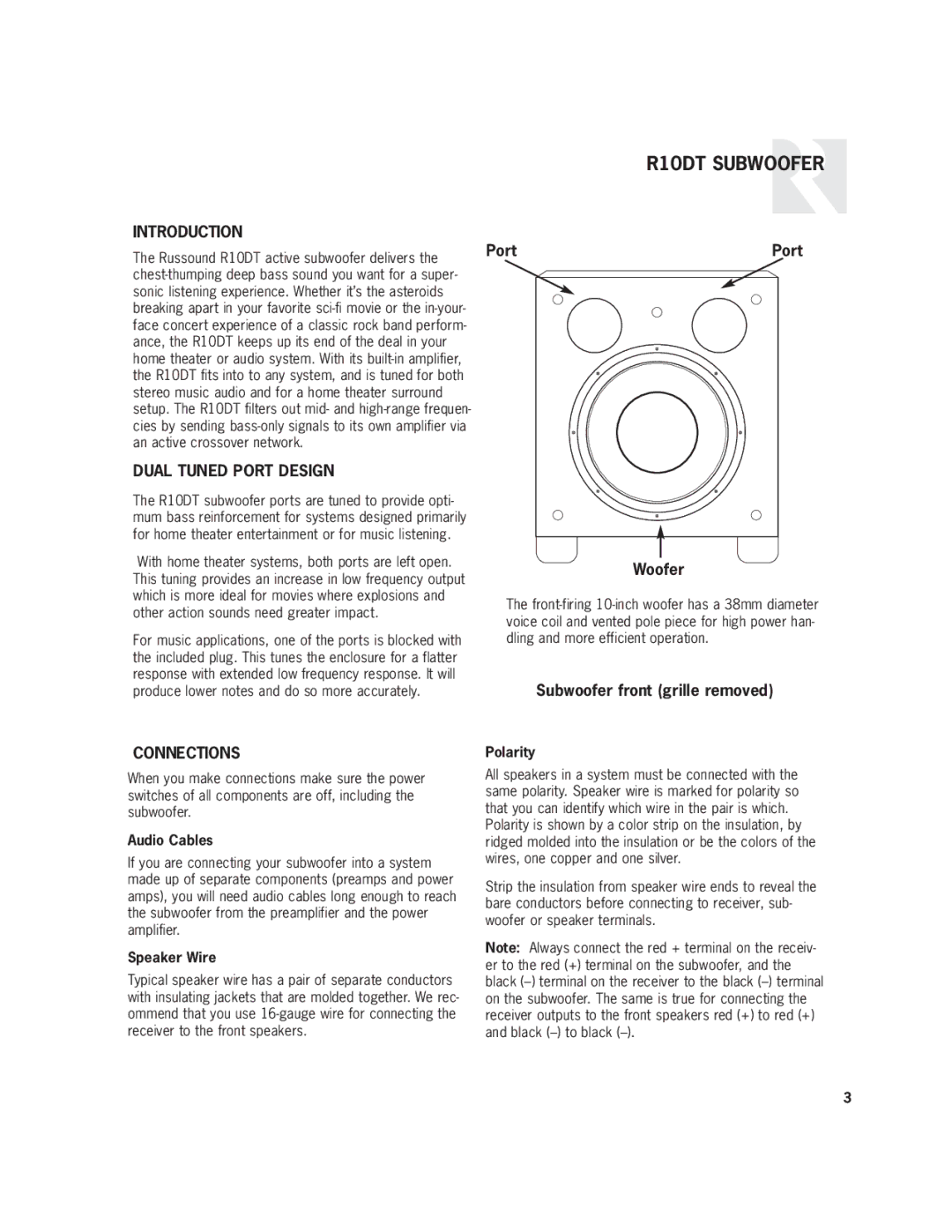R10DT specifications
The Russound R10DT is a versatile and sophisticated audio distribution solution designed for both residential and commercial environments. This powerful piece of equipment enables users to enjoy high-quality sound throughout their spaces, making it an ideal choice for music enthusiasts and audiophiles alike.One of the standout features of the R10DT is its ability to manage multiple audio sources and zones simultaneously. With the capacity to support up to four different audio sources and control up to 10 different zones, users can easily play different music in each zone or the same music across all zones. This flexibility makes it perfect for both entertaining and everyday use, catering to various preferences in large homes or commercial setups.
The R10DT employs advanced digital technology to ensure superior sound quality. It integrates state-of-the-art digital signal processing (DSP), which provides precise audio control and enhances overall sound performance. The unit also includes built-in amplification, which delivers a robust output that can drive speakers directly, eliminating the need for external amplifiers in most setups.
Another significant advantage of the R10DT is its user-friendly interface. With an intuitive design, the device allows for easy navigation and operation. Users can control the system via a number of different methods, including a dedicated mobile app, wall-mounted keypads, and traditional remote controls. This versatility ensures that users can enjoy seamless audio control from anywhere in their environment.
In terms of connectivity, the R10DT is equipped with various options, including Ethernet and Wi-Fi capabilities, allowing for easy integration into existing home networks. This connectivity enables users to stream music from popular services and access their digital libraries without the hassle of complicated setups.
The R10DT is also designed with scalability in mind. As a modular system, it allows for future expansions and enhancements, providing users with the flexibility to grow their audio system as their needs change. This makes it an excellent long-term investment for those looking to create a comprehensive audio experience.
Overall, the Russound R10DT combines cutting-edge technology with high performance and ease of use, making it an exceptional choice for anyone looking to elevate their audio experience. Whether for intimate gatherings or larger events, the R10DT ensures that high-quality sound is always within reach, providing a truly immersive listening experience.

